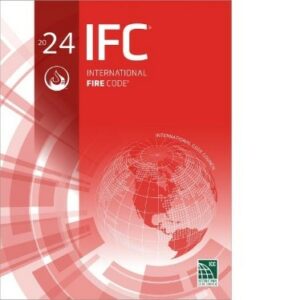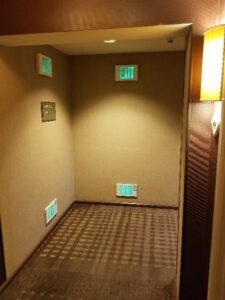Changes to the 2024 IBC and IFC

Changes to the 2024 IBC and IFC
By John Swanson, CFPS
The 2024 editions of the International Building Code (IBC) and International Fire Code (IFC) will be in print in the next few weeks. For those of us who work in the codes and standards regularly, the anticipation is building. While most people may not share that sentiment, there’s something fulfilling about seeing the finished product knowing hours upon hours of time, effort and for some of us, meetings, has gone into the development of the codes that are used throughout the world.
You may be thinking, I work as a sprinkler designer, I don’t need to know what changed in the IBC or IFC. While it is accurate that most of the changes in the model codes directly impact code officials and authorities having jurisdiction, here’s one change in the 2024 IBC and IFC that has an impact on the sprinkler designer, and the sprinkler industry in general.

Defining “limited verbal or physical assistance”
The 2021 IBC and IFC use the term “Condition 1” or “Condition 2” to apply the fire protection requirements based on the occupants’ mobility (or lack thereof) and if the occupants need assistance evacuating. The terms Condition 1 and Condition 2 are used in the Group I-1 and Group R-4 occupancy definitions. Condition 1 applies to facilities where the occupants do not need any assistance with evacuation. Condition 2 applies to those occupancies where occupants require “limited verbal or physical assistance” with evacuation. Previous editions of the code didn’t define “limited verbal or physical assistance”, so it was left up to the building owner, design professional and code official to determine.
The 2024 IBC clarified and added a definition to assist with determining if the occupants need verbal or physical assistance with evacuation. This is important for the sprinkler designer because the Condition 1 or 2 classification can mean the difference between when an NFPA 13R system is required and when an NFPA 13D sprinkler system is permitted.
Incidental Use Areas and the IBC
Another change in the IBC impacting fire protection is related to the incidental use area requirements in Section 509 and ambulatory care facilities. An Incidental use area is a room, space or area in a building considered to be an ancillary function associated with an occupancy that poses a higher level of risk. Said another way, an incidental use area is a room or space that presents a higher risk in an occupancy. An example of an incidental use area is a chemistry lab inside a school building. The chemistry lab is a higher hazard inside the school. Historically, the code has required incidental use areas to be fire separated OR protected with fire sprinklers. In some situations, the code will require both fire separation and sprinkler protection. The 2024 IBC now requires incidental use areas located in ambulatory care facilities to be separated from the rest of the building by a 1-hour fire barrier and protected with fire sprinklers. Previous editions of the IBC required a 1-hour fire barrier or sprinklers. It’s important to clarify that ambulatory care facilities include buildings used for medical, surgical, psychiatric, nursing, or similar purposes on less than a 24-hour basis where the persons are rendered incapable of self-preservation. In other words, the occupant(s) need assistance evacuating. These occupancies do not include the standard doctors or dentist offices. However, it will likely include day surgery centers and other similar occupancies where occupants are placed under general anesthesia.
2024 International Fire Code

Lithium-ion Batteries
Several changes were made in the 2024 IFC specific to the use and storage of lithium-ion batteries, including equipment that uses lithium-ion batteries. In previous editions of the IFC, sprinkler protection was required when the lithium-ion batteries were used with an energy storage system. Now, fire sprinklers are required for Group B, F-1, M and S-1 that use or store these batteries, regardless of whether they are used in conjunction with an energy storage system or not. Examples include: testing, research and development of batteries, manufacture of batteries, storage and/or sale, just to name a few. The issue of how to properly protect lithium-ion batteries with fire sprinklers will need to be addressed in another Technotes article due to the complicated nature of this issue.
Floor Level Exit Signs
Another change that primarily will impact authorities having jurisdiction applies to floor level EXIT signs in Group R-1 (hotel/motel) occupancies. The 2024 IBC includes an exception for the elimination of floor level EXIT signs when the building is protected throughout with an NFPA 13 or NFPA 13R sprinkler system.

